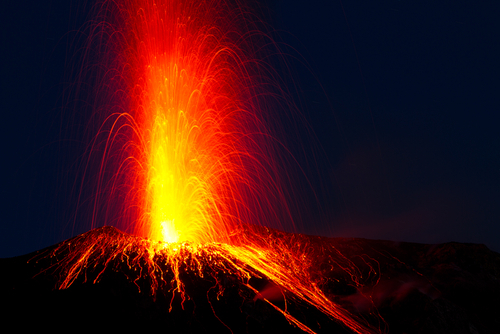6.8 Volcanoes
 Volcanoes tell us that the Earth's mantle consist of molten rock called magma. As tectonic plates move, the pressure of magma in the Earth's mantle increases. The pressurized magma erupts through a thin spot in the Earth's crust. The molten magma that erupts to the surface of the Earth is called lava.
Volcanoes tell us that the Earth's mantle consist of molten rock called magma. As tectonic plates move, the pressure of magma in the Earth's mantle increases. The pressurized magma erupts through a thin spot in the Earth's crust. The molten magma that erupts to the surface of the Earth is called lava.
Volcanoes, like earthquakes, are the most common near the border zones of tectonic plates. Volcanoes can also exist under water.
Volcanic eruptions tell us that a volcano is active, but predicting the time of a volcanic eruption is impossible. Some volcanoes are monitored with different measurement devices, which are used to gain information about the volcano's activity and hopefully warn neighboring areas of an impending eruption.
Volcanic eruptions disturb human activity. During a volcanic eruption, volcanic matter such as ash is released to the atmosphere. This volcanic matter can create problems for agriculture and air traffic.
| Area | Volcano | Year | Damages |
|---|---|---|---|
| Greece | Santorini | 1650 | An extremely powerful eruption and tsunami. No clear information on the damages. |
| Italy | Vesuvius | 79 | Approximately 3 400 fatalities, including the Roman city of Pompeii. |
| Hawaii | Kilauea | 1983 | Lava covered over 80 km2 of the island. |
| Columbia | Nevado del Ruiz | 1984 | Over 20 000 fatalities. |
| Area | Volcano | Why is it worth following? |
|---|---|---|
| Italy, Napoli region | Campi Flegrei | A supervolcano. A large caldera with 24 craters. It has risen over 30 cm during the 2000s. It has increased its volcanic activity during recent years. |
A volcano.